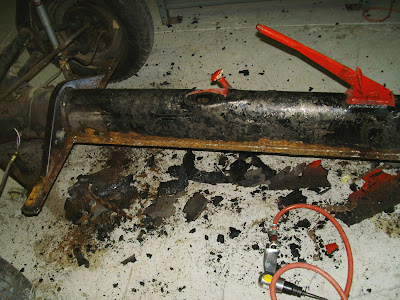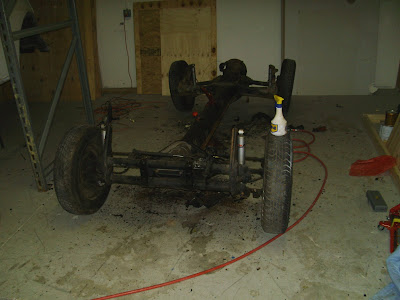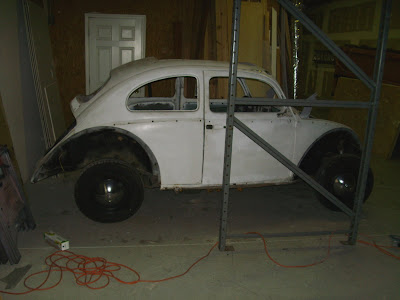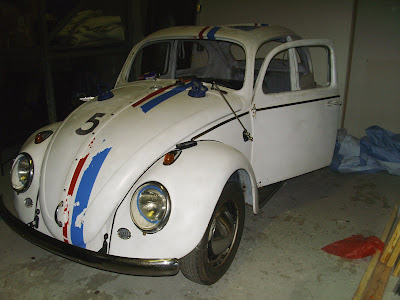Today was the day I was going to unveil my new purchase to my wife and son (Andrew) who is an absolute car nut from the day he was born and at the age of five can tell me the make/model of almost any car on the road. One of his favorite movies of all time is ....Herbie the Love Bug. That said I wanted to ensure this was a car I am going to restore and not discard back into the market. I'm comfortable with the shape it is in and feel confident the work will not be all too complex - just time consuming. I can't think of a better thing for Andrew than to know he has a Herbie in his life and that he'll be part of saving it. (He saw the car advertised on
thesamba.com and asked me to get it for us so we can wash him and put new oil in him). How could I resist and Bugs aren't like buying a car at
Mecum or Barrett Jackson. The unveiling will have to wait until tomorrow since our night out for dinner ran late.
Since I had a busy work day I didn't get to spend time on the Bug until after dinner. I did, however, have time to stop by
ProCryo earlier in the day. They are the shop that will be sandblasting the entire setup as time goes on. My first order of business will be to sort the engine out and get what parts are in good order over for blasting and either ceramic coating or powder coating. It will depend on the part and amount of heat built up.
ProCryo also does cryogenic metallurgy and isotropic coatings on engine parts. Mainly used for racing it provide a smother finish and a more durable part meant for high tolerances (
OK - that's my simpleton's explanation anyway). I may have them work on some of the engine internals to help with longevity. You can visit them at
www.procryo.com.
I was able to pull the front lights, side trim, window regulators and door hardware. I did have to employ a few "specialty" tools like the
GraBit screw extractor on some stripped screws. The door catches had some real stubborn screws that took some heat from my
MAPP tank.
I'm taking my time documenting everything I have and putting stuff in order the best I can. I've decided to use Lawn Yard Waste bags (huge triple-ply paper bags) to store my stuff. I figured they wouldn't trap humidity and would breath nicely. Who am I kidding - they are cheap and that's why I'm using them. Anything with some rust gets hit with some
WD40 and goes in the bag. Each bag is numbered and referenced off the inventory spreadsheet so I know what I have, how much of it and what I'll need to buy.
Well - no pics today - forgot the camera. Will have some time tomorrow hopefully to keep pulling the bits off. Still looking to have the body/chassis divorced by Sunday.
Stay Tuned...










































